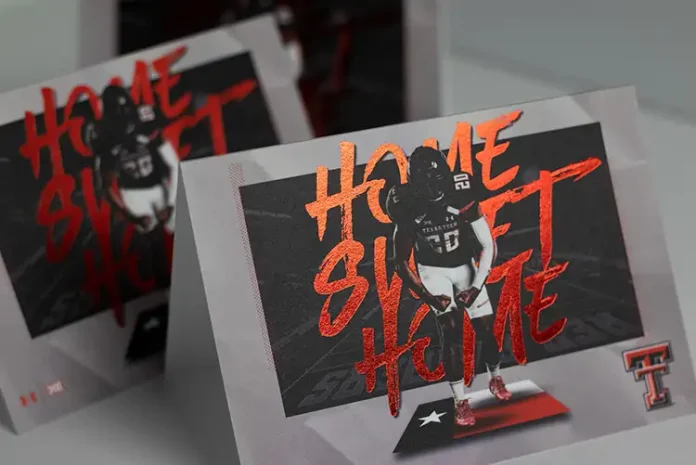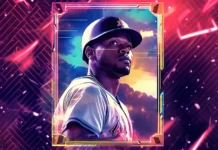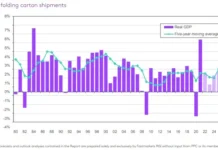By Trish Witkowski, president of Foldfactory
It’s 2023, and two of the greatest things that came out of the past three difficult years have been the rediscovery of and appreciation for tangible experiences – whether that’s a piece of mail, a visit to a store or an in-person meeting. Digital overload was a very real thing, and although it provided entertainment and helped everyone to communicate, the novelty wore off. The desire for multisensory experiences became greater than ever and continues to this day. Overall, this has been great for print marketing, and the industry needs to pounce on the opportunity.
First, why digital-only marketing has a problem
The days of boasting that digital marketing is cheaper and easier than print now are solidly in the past – the pandemic created an accelerated increase in online competition, due to the shift from in-person experiences to e-commerce. That competition has driven up digital ad pricing, with the average cost per click (CPC) on Google ads between $1 and $4, and the average cost per click on a Facebook ad at 94 cents (WebFX). And that’s just for a click. In 2017, that Facebook click was 28 cents. It was hard to beat the digital pricing argument at 28 cents, but at $1+ per click? Digital marketing is not the low-budget wonder that it used to be. It’s still essential in today’s marketing mix, but a cheap and easy strategy? Not a chance.
In addition to the rise in costs for digital marketing, the other – possibly greater – challenge of digital-only is that the rules always are changing. Here are four examples:
- In January 2022, Facebook removed thousands of detailed targeting options related to topics people might perceive as sensitive, such as causes, organizations or public figures that relate to health, race or ethnicity, political affiliation, religion or sexual orientation. Facebook did not provide a list of the targeting terms that were removed, either. They were just gone.
- Ninety-seven percent of Apple iOS15 users have opted into its new Mail Protection Privacy (MPP) feature, which prevents email marketers from tracking users’ email behavior.
- Google Chrome, which holds 63% of the browser share, is set to remove third-party cookies by late 2023. Safari and Firefox already block them.
- According to eMarketer, more than 40% of internet users are using ad blockers. Additionally, an Edelman study determined that 45% pay for streaming video services that don’t contain ads or that have reduced ad loads.
So, whether it’s the platform or the user blocking the path of marketers, it is getting a lot tougher to get digital marketing content consistently in front of the right customer or prospect.
Print + digital for the win
Whereas the argument used to be “which is better?,” it’s now become much clearer and easier to prove the position that a hybrid, print + digital marketing strategy truly is the best way to enhance the customer journey and drive sales. According to an SG360 study, 92% of direct mail recipients report being driven to digital activity. So, the two work together as a powerful sales team.
Each marketing channel has a role to play – digital marketing works to engage and track (view, click, visit, read) and print is used to slow down customers, narrow their focus and drive them to action. More than just a nice to-do, it’s actually become an expectation that brand experiences will be more nuanced and dimensional. In fact, 85% of consumers indicated that they expect and appreciate a blend of digital and physical engagement with brands (CMO Council).
Making that print touchpoint count
Direct mail has a lot going for it these days (and the data to back it up), but rising postage and paper costs, supply chain challenges and inflation mean there are big investments and risks to print marketing as well, so there’s no room for error. With everything on the line, print customers need more help than ever to make sure that their mail campaigns succeed.
The great news is that, as print professionals with a wide array of techniques and tools that can enhance the experience and the engagement of a printed piece, there are so many ideas and strategies designers can bring to the table (translation: VALUE) to help their customers succeed in their campaigns.
I spend a lot of time analyzing different strategies for mail, and I’ve compiled five of my go-to mail enhancement ideas:
1. Special print effects
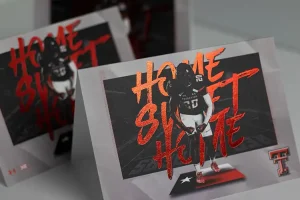
I’m starting with special print effects because this category is huge, incredibly powerful and can be applied to everything from short- to long-run print jobs. What I love about special print effects these days is that there are many ways to get the effect designers are looking for. Let’s take clear gloss, for example. Designers can use gloss varnish, gloss UV coating, gloss aqueous coating, clear gloss digital enhancement ink, sleeking, gloss laminate or clear gloss foil. I have not even touched upon metallics, raised textures, specialty inks and all of the other great effects in this category. There’s something for everyone and every budget. Sometimes a designer or marketer just needs to know where to apply the effects.
2. Technology
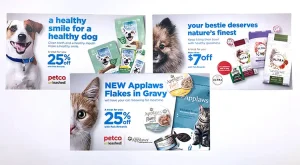
How can one leverage print technology to create engaging communications? Oh, there are so many ways, and not all of them will bust clients’ budgets. My top three technologies are variable data personalization, QR codes and direct mail retargeting/direct mail automation. For variable data, there’s a lot more than first-name personalization – consider batch targeting using imagery and customized content for different audiences. QR codes are a no-brainer these days. Everyone knows how to use them, so make the destination worthwhile. And for direct mail retargeting and automation, check out Lob, PebblePost and Postalytics, to start.
3. Un-envelopes
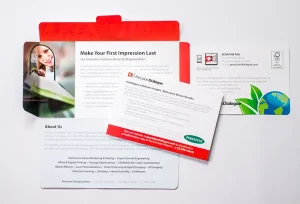
Supply chain issues with envelopes led to a lot of forced creativity in the folded self-mailer (FSM) category, and one of my favorite solutions is the un-envelope or faux-velope. The concept is to create a folded self-mailer that looks like an envelope, but it is not an envelope. The easiest way to do this is to add a short flap that is glued down and gives the appearance of an envelope, but designers can get really creative by shaping the flap with a point or tab to open.
4. Interaction devices
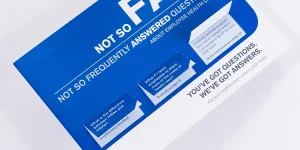
Creating clever and simple ways for someone to interact with the mail piece is a really easy thing to do. For example, adding a zip strip (or paper zipper) as an opening mechanism creates a great sound and a fun experience to tear it away. In the process, it engages three senses – touch, sight and sound – and the more senses one can engage, the greater the experience and brand recall. Another way to add interaction is with a peek-a-boo panel. If two panels are glued together, leave a section free of glue and perforate the top panel so that it can be peeled up to reveal a message or image below. Fun and easy!
5. Texture and dimension
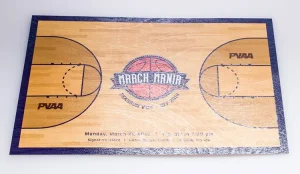
Adding texture draws attention and sensory interaction, and this can be achieved through print embellishments to mimic known textures like rubber, woodgrain, leather, sand and more. Paper texture is another way to make an impression. Paper itself is dimensional and can be cut and folded in different ways to create pop-up sections and memorable dimensional experiences.
Bring fresh print marketing ideas to the table
So, now I’m going to give the readers of this article some homework: Go back through client work to see if anything has been produced that could be considered a good example of any of the five categories listed here. If examples are found, set them aside to share with customers (if allowed). If there are no examples, I would suggest that making some “house samples” that demonstrate the concepts and can be handed out. Basic order of magnitude pricing scales would be helpful as well. Designers and marketers are visual, and they have to live by their budgets, but if they are shown something that can increase their visibility, engagement and return, they just might jump on it.
Trish Witkowski is president of www.Foldfactory.com, curator of the world’s most exciting collection of folded print and direct mail samples, and host of “60-second Super-cool Fold of the Week” on YouTube. Witkowski also is an instructor for LinkedIn Learning and the author of several books on folding and direct mail strategy.

